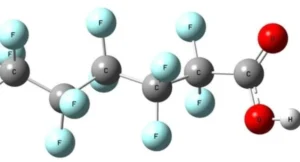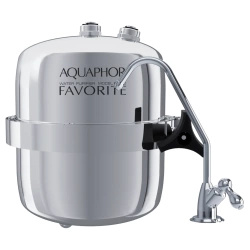 „Forever chemicals”, also known as PFAS, are long-chain compounds that do not break down in the environment. Chronic exposure to these chemicals, particularly through ingestion, has been linked to a variety of health problems. The latter include decreased fertility, hormonal changes, increased cholesterol, weakened immune system, increased cancer risk, and developmental delays in children. Efforts to remove PFAS from the environment have increased in recent years. However, methods such as incineration come with their own challenges as they can lead to air contamination. Despite attempts by researchers, their molecules have proven to be difficult to destroy. This is because they cannot be broken down by fire, chemicals, or even bacteria.
„Forever chemicals”, also known as PFAS, are long-chain compounds that do not break down in the environment. Chronic exposure to these chemicals, particularly through ingestion, has been linked to a variety of health problems. The latter include decreased fertility, hormonal changes, increased cholesterol, weakened immune system, increased cancer risk, and developmental delays in children. Efforts to remove PFAS from the environment have increased in recent years. However, methods such as incineration come with their own challenges as they can lead to air contamination. Despite attempts by researchers, their molecules have proven to be difficult to destroy. This is because they cannot be broken down by fire, chemicals, or even bacteria.
Achilles’ heel
PFAS molecules are comprised of a long chain of carbon and fluorine atoms bonded together strongly, often with charged oxygen atoms at one end. The team of researchers of the Northwestern University led by William Dichtel found that these oxygen atoms are the weak point in the 'forever chemicals’ molecule. They applied heat along with an uncommon solvent and a common reagent, sodium hydroxide, which caused the oxygen atoms to separate from the molecule and the fluorine atoms to also break away. This resulted in the formation of a safe fluoride substance and the conversion of over 90% of the chemicals into safe carbon byproducts within 12 hours. Dichtel referred to the group of charged oxygen atoms as the „Achilles’ heel” of the PFAS molecule.
Application
Water treatment plants in high-risk areas would be the primary target for solutions like this. Additionally, the team has also developed a technique to break down 'forever chemicals’ using high mechanical force. In addition, a promising technique called supercritical water oxidation is being explored. This technology uses water heated to a high temperature and pressure, breaking down the PFAS molecules into smaller pieces. They, in turn, can be neutralized to form non-toxic salts and PFAS-free water.
The EU and PFAS
The European Union has taken several steps to regulate PFAS, which are classified as emerging contaminants. This is due to their widespread use and persistence in the environment. Moreover, the EU adopted new regulations to limit the use of PFAS in food contact materials. They include food packaging, to protect consumers. Additionally, the EU has listed PFAS as substances of very high concern under its REACH regulation. This allows for the possibility of restrictions on their use. Furthermore, the EU has funded research on PFAS. The funding focuses on the development of alternative substances and on measures to reduce their release.
Find out about causes and effects of lead in drinking water.

